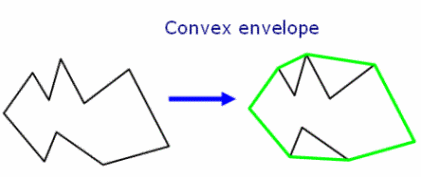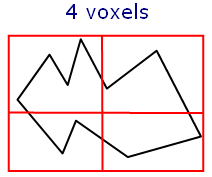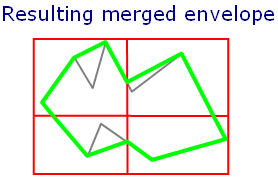- Accessing the Spatial Split Option
- Benefits of this Option
- Spatial Split Option Impact on the Final Result
Accessing the Spatial Split option
To access the Spatial split option:
-
Click Swept Volume
 .
.
The Swept Volume dialog box is displayed.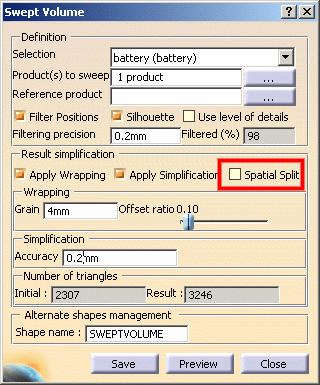
-
Select the Spatial Split check box. A new algorithm is used with the defined accuracy for the wrapping computation.
To take advantage of the new spatial split option:
-
Select Apply Wrapping check box.
-
Specify the appropriate Grain value (you can increase the grain value as the quality will remain satisfactory).
-
Select the Spatial Split check box.
-
Launch the swept volume calculation

Notes:
-
Using Wrapping and Simplification in Swept Volume provides a scenario example.
-
When the spatial split check box is selected, the offset ratio option is disabled.
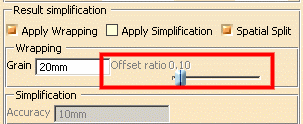
-
Benefits of this Option
Spatial split option is useful when dealing with a track presenting numerous positions or dealing with a large digital mockup.
The new spatial split algorithm computes a perfectly
rounding envelope of a moving part.
This is referred as a convex envelope computation for
the swept volume.
Here is an example with comparative graphics:
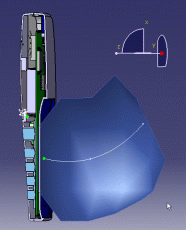 |
 |
with the previous wrapping algorithm
|
with the new spatial split
|
Spatial Split Option impact on the Final Result
Below, is a simple example of a convex envelope computation.
A convex
envelope computation guarantees that the resulting shape is perfectly
stretched around the initial model and released to conform as closely as
possible to the initial model (i.e.; intuitively, the convex envelope can
be defined by imagining a wrapping elastic band stretched around the
initial model).
|
With the spatial split option selected, the convex envelope of the initial model is computed for each voxel unit (defined by the grain size). |
||
|
Once all necessary convex envelopes are computed, they are merged together and only the external envelope is kept in the final result. The computation time is increased but the new spatial split algorithm provides an absolute wrapping envelope (i.e.; a convex shape tightly stretched open to encompass the initial model (see below in green) |
||
|
|
